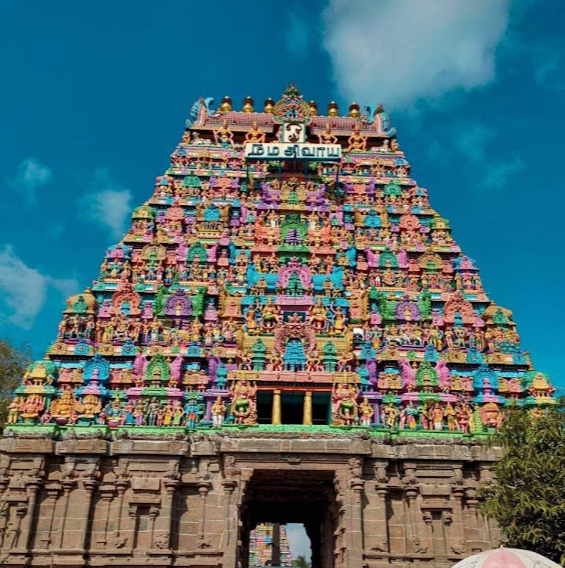Origin/History :-
This temple was constructed during the Chola period and holds great historical and spiritual significance. Saint Thirugnanasambandar visited this temple and composed hymns in praise of Lord Shiva, which are cataloged in the Second Thirumurai. Among the Saivite quartet, Sambandar alone has visited and sung about this temple. Additionally, Saint Arunagirinathar has glorified Lord Shanmugha and this sacred site in seven Thirupugazh hymns. The Lord of the temple is celebrated in the hymns of Saint Thirugnanasambandar, Karuvurar (Tiruvisaipa), and Arunagirinathar (Thirupugazh). This temple is the ninth Shiva temple in the Kongu Nadu region praised in the Thevaram hymns.
Puranic Significance :-
According to legend, Lord Shiva noticed Brahma's conceit as the creator of the world and sent Kamadhenu, the divine cow, to take up the task of creation. Shiva instructed Kamadhenu to worship him while hiding in an anthill within the Vanji forest at Karur. Kamadhenu worshipped Lord Shiva by pouring her milk on the anthill. During this act, her hoof accidentally struck Lord Shiva. Kamadhenu pleaded for forgiveness, and Lord Shiva, moved by her devotion, forgave her and came to be known as Pasupatheeswarar.
Pleased with Kamadhenu's worship, Shiva allowed her to continue the task of creation. Meanwhile, Brahma, having realized his mistake, performed penance at this site. He created a sacred Theertham and worshipped Lord Shiva to regain his creative powers. Shiva, pleased with Brahma's devotion, pardoned him and restored his power of creation.
